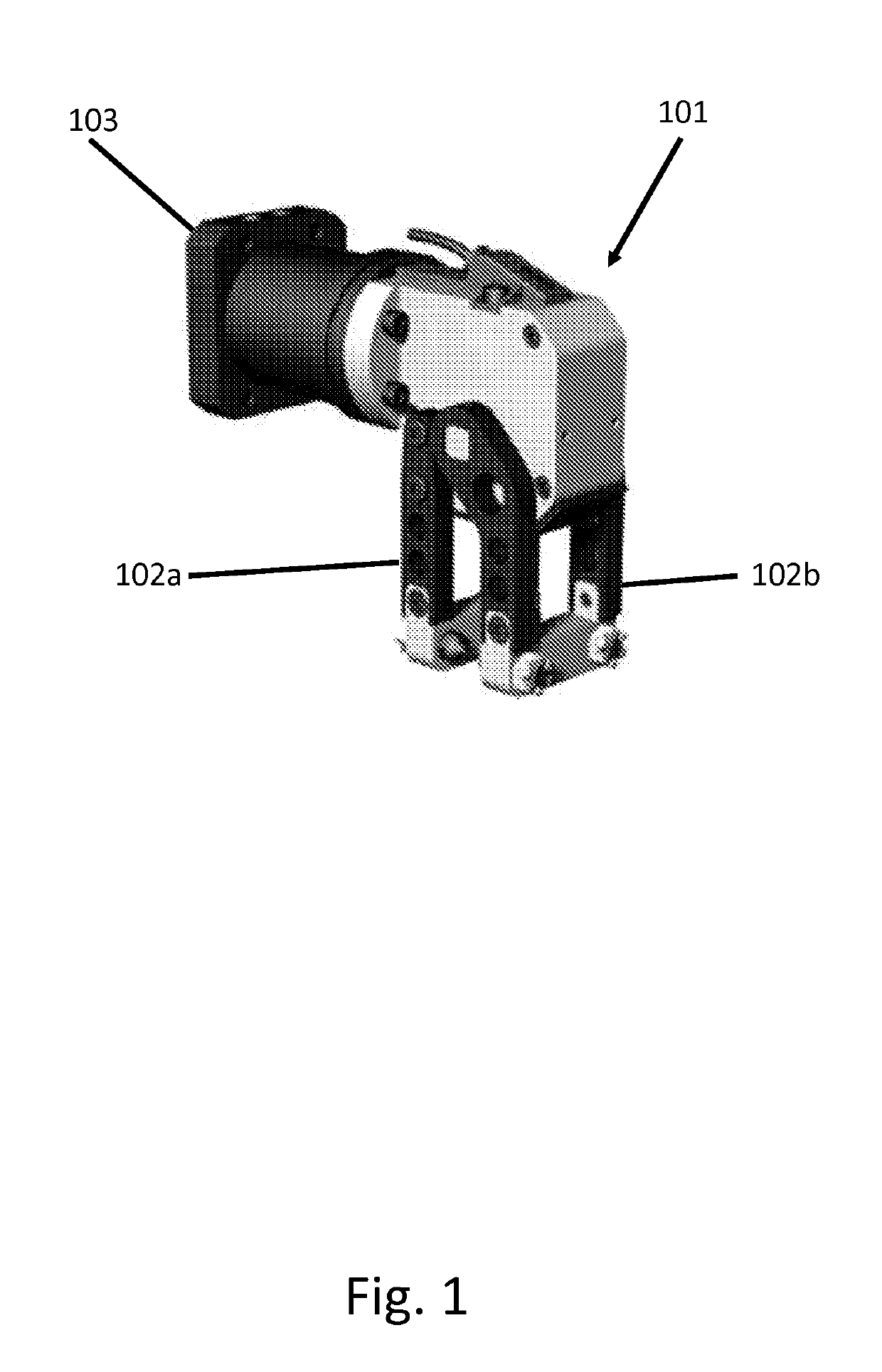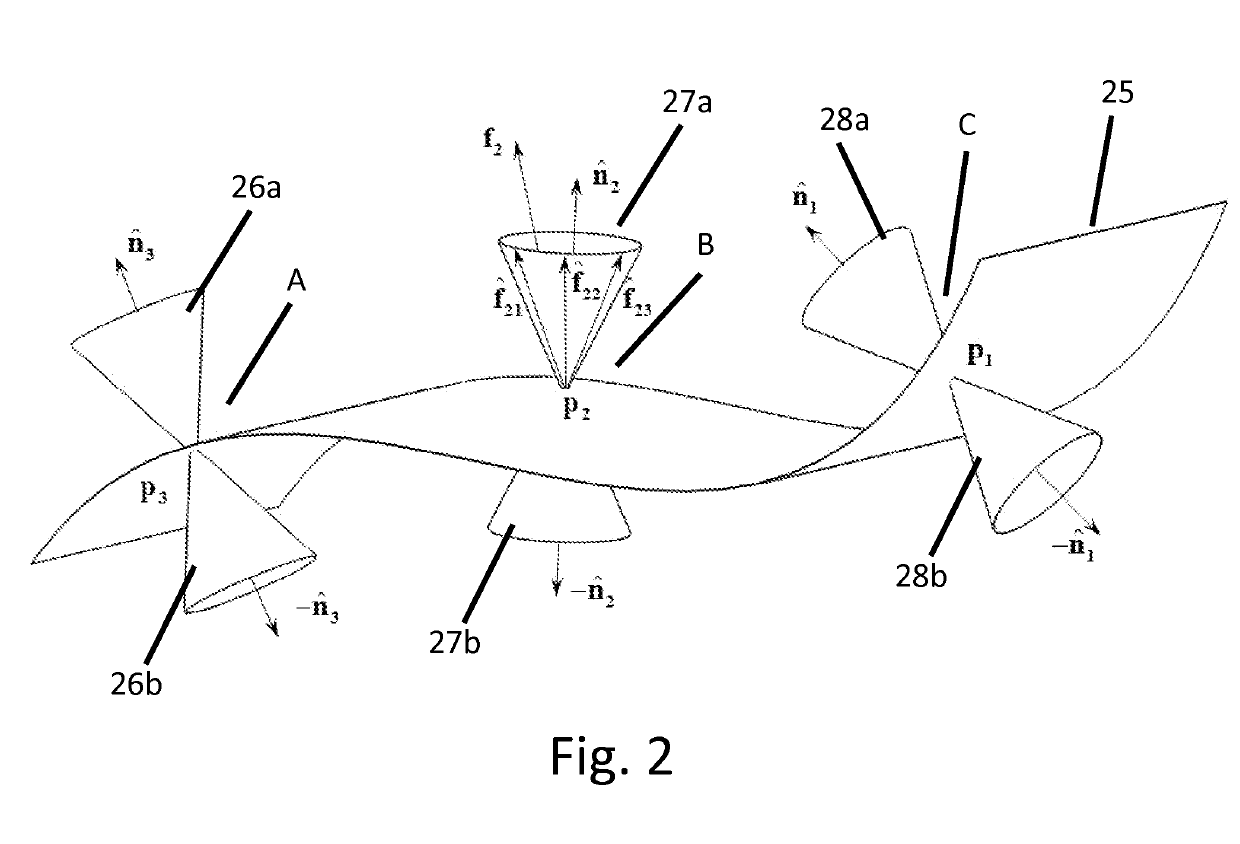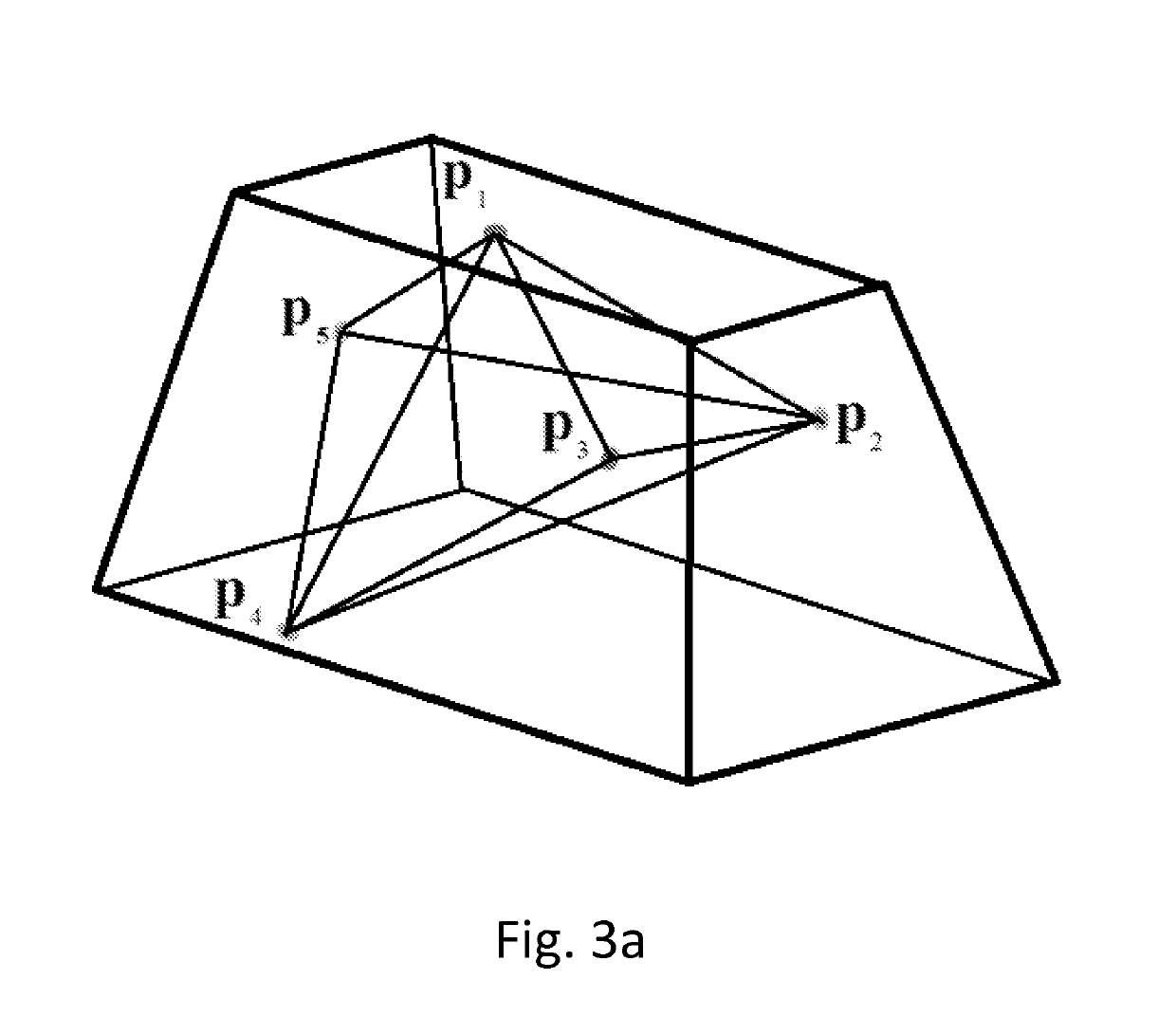Method and system for designing a common end effector for a robot which is capable of grasping plurality of parts, each having its own geometry
a robotic arm and end effector technology, applied in the field of robots, can solve the problems of inflexible variations of objects and tasks, consuming a large amount of engineering time, and the build and testing phases of a typical end effector, and achieve the effect of improving quality and grasping
- Summary
- Abstract
- Description
- Claims
- Application Information
AI Technical Summary
Benefits of technology
Problems solved by technology
Method used
Image
Examples
example 1
[0067]A 4-finger grasp can be described by a tetrahedron (4 facet polytope—see FIG. 4, the 4 faces are marked as Face 1-Face 4). FIG. 4 in fact represents a 4-finger grasp which is parameterized using a 14 dimensional feature vector. According to Proposition 1, six constraints are necessary to describe the tetrahedrons shape and the 8 parameters to describe the normal directions relative to the tetrahedron, resulting in a 14-dimensional feature vector. This example now considers the algorithm to calculate face 4 as the base triangle with the largest area. The parameters representing the shape of the tetrahedron, according to this algorithm, are given as follows. The length of the longest edge p1p2 of the base triangle t1=Δp1p2p3 (the largest area triangle)
d1=∥p1−p2∥ (12)
and the two angles adjacent to the edge
[0068]γ11=cos-1((p3-p1)-(p2-p1)p3-p1p3-p1)(13)γ12=cos-1((p1-p2)-(p3-p2)p1-p2p3-p2)(14)
[0069]The next two angles are the angles of the adjacent triangle t2=Δp2p3p4, which is...
example 2
[0073]A 3-finger grasp of object B is described by a single triangle having 3 vertices. An example of such configuration of a grasp is illustrated in FIG. 5a. The position of the 3 fingers relative to each other can be injectively represented as a triangle by two angles γ1, γ2 and the edge length between them as d1, given by equations (12)-(14). However, for three contact points, the polytope degenerates into a triangle and therefore this case is not fully covered by algorithm 1. Therefore, and as shown in FIG. 5b, the normals are described at the contact points by two angles. Angle ϕi is the angle between the normal {circumflex over (n)}i and the normal to the triangle surface {circumflex over (n)}f given by
ϕi=cos−1({circumflex over (n)}−{circumflex over (n)}f),i=1,2,3 (14)
and angle ϑi is the angle of the normal's projection on the triangle surface with the adjacent triangles edge, given by the following Equation 15:
[0074]π2-sgn(((n^3×n^f)×a^3,1)-n^f)cos-1((n^3×n^f)-a^3,1),i=3...
example 3
[0116]Given that registry set contains five feature vectors u1, . . . , u5∈q that are common to two or more sets of ε1, ε2, ε3, ε4 (q=4 parts). After the performance of function JoinFCGS on ε1, . . . , ε4, each vector uj is affiliated to a binary vector ũj. For example, the five outputted binary vectors are shown in (35).
[0117]u~1=(1001)u~2=(0101)u~3=(0111)u~4=(1010)u~5=(1111)(35)
[0118]For instance, binary vector ũ1 has 1's in the first and fourth position. Therefore, the respective feature vector u1 exists in FCGS ε1 and ε4, meaning that the corresponding grasp configuration can grasp objects 1 and 4. Binary vector ũ5 equals to ({right arrow over (1)}) and therefore, it corresponds to grasp configuration which can grasp all the objects. If such a single binary vector ũ5 which satisfies condition (33) does not exist, it would be desired to search for the minimal set of binary vectors satisfying the condition. In this example, vectors ũ2 and ũ4 are taken, where their union r...
PUM
 Login to view more
Login to view more Abstract
Description
Claims
Application Information
 Login to view more
Login to view more - R&D Engineer
- R&D Manager
- IP Professional
- Industry Leading Data Capabilities
- Powerful AI technology
- Patent DNA Extraction
Browse by: Latest US Patents, China's latest patents, Technical Efficacy Thesaurus, Application Domain, Technology Topic.
© 2024 PatSnap. All rights reserved.Legal|Privacy policy|Modern Slavery Act Transparency Statement|Sitemap



